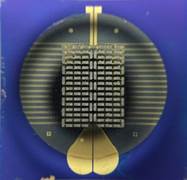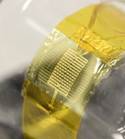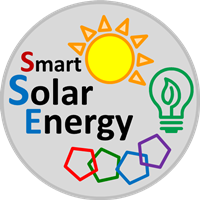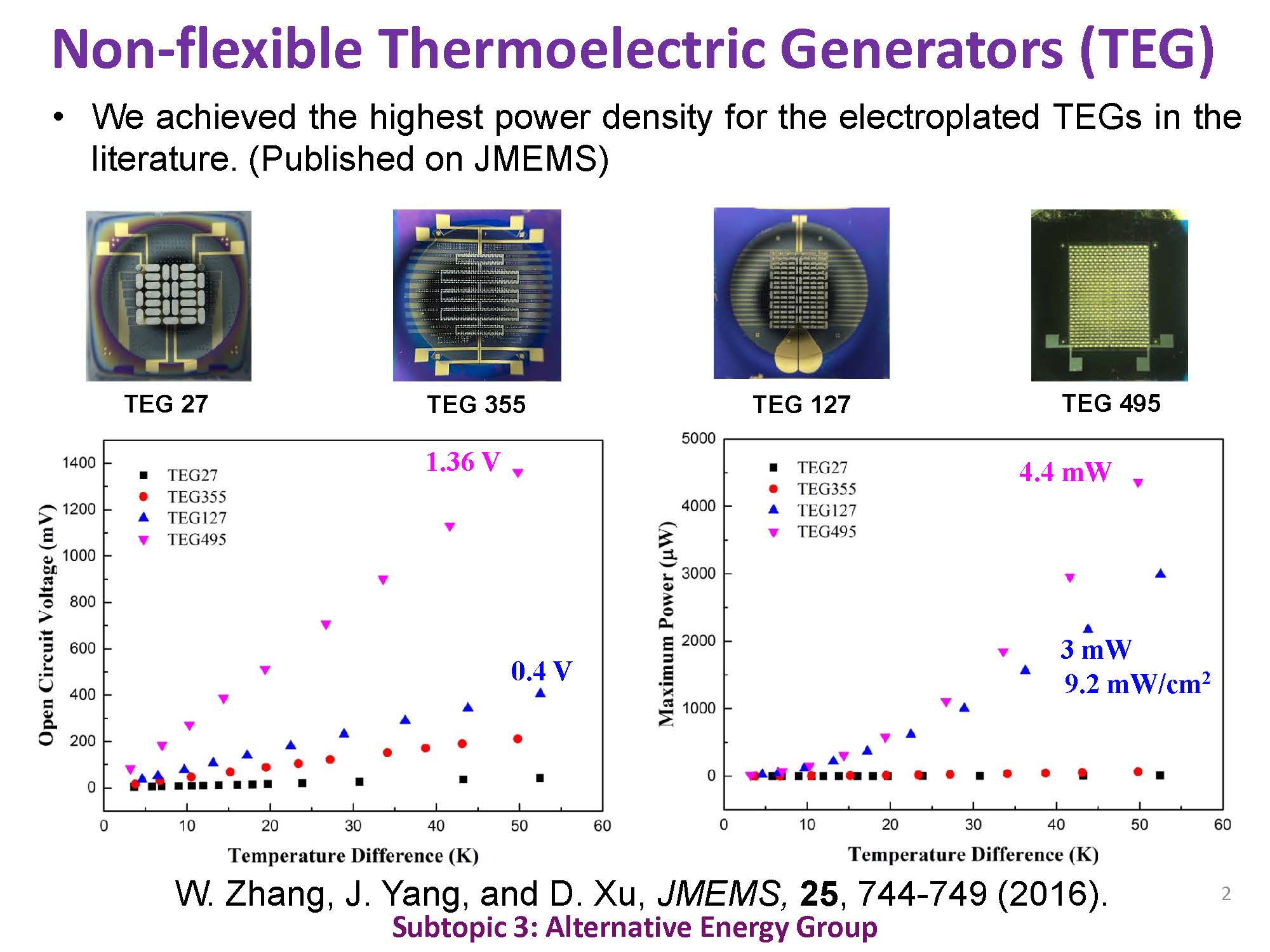Subtopic 3: Alternative Solar Technologies
熱電發電機 (Thermoelectric Generators, TEG) 之研發
Development of Thermoelectric Generators (TEG)

非柔性熱電發電機
Non-flexible TEG

柔性熱電發電機
Flexible TEG
項目說明 Project Description
熱電發電機 (TEG) 是運用熱電效應將熱(溫度差)直接轉換成電能的一種裝置。在生活四周,有許多被廢棄的熱能,如:
如果能將這些熱能善加利用,即可成為再次使用的能源。
TEG 具有可靠性高、壽命長及環保等優點,而且,相比傳統的熱力發電機,它的體積小、可擴展,能在較小的溫差下生產電力。然而,它的效率不高,阻礙了它的應用發展。
Thermoelectric Generators (TEGs) are devices that can directly convert heat (temperature difference) into electricity. In our daily life, a lot of heat energy was wasted, e.g.:
If these heat sources are harvested well, they can be utilized again.
TEGs have many advantages including high reliability, long lifetime, and environmental friendliness. Especially, compared to conventional heat engines, TEGs are compact, scalable, and can be easily driven by small temperature differences. However, its low energy conversion efficiency hindered its widespread applications.
特點及優勢 Uniqueness and Competitive Advantages
團隊結合了脈衝電鍍法及微細加工,在溫度差 52.5 K 之下製造出功率密度高達 9.2 mW cm-2 的熱電發電機,是文獻紀錄中電鍍微型熱電發電機之中最高。該技術已獲一項美國專利。
The team developed thermoelectric generators (TEGs) by combining pulsed electroplating with microfabrication processes. It achieved a power density as high as 9.2 mW cm-2 at a temperature difference of 52.5 K, which is the highest value reported so far for the electroplated micro-TEGs in the literature (J Microelectromechan. Syst. 25: 744-9). A US patent has been filed.
應用 Applications
此外,柔性 TEG 更可應用在無線傳感器及微電子器件(如可穿戴醫學傳感器及智能手表)上,以收集人體之熱能來為設備供電。柔性可穿戴設備具有彈性,與皮膚貼合的更好,佩戴舒適度更佳。它們可應用於健康監測、運動監測、環境監測、VR 遊戲娛樂等方面。
Flexible TEGs could be used for thermal energy harvesting from the human body to power microelectronic devices (such as wearable medical sensors and wristwatches). They are very flexible, making them well adhered to the skin and comfortable for the users. Applications include health, sport, and environment monitoring, as well as entertainment such as virtual reality (VR).
相關文獻 Related Paper:
- Wenhua Zhang*, Juekuan Yang* & Dongyan Xu*. (2016). A high power density micro-thermoelectric generator fabricated by an integrated bottom-up approach. Journal of Microelectromechan. Syst. 25: 744-9 [Link]
| Project Leaflet 研究計劃簡介 |
Copyright © 2014 Faculty of Engineering, The Chinese University of Hong Kong. All rights reserved.

